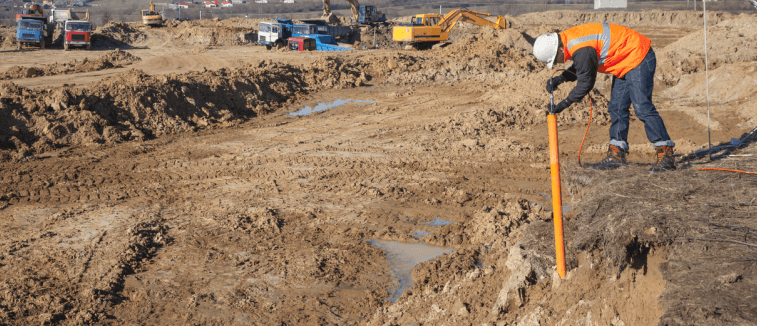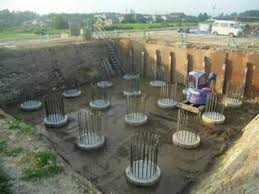A Comprehensive Overview: All About Geotechnical Engineering and Its Applications
Wiki Article
A Comprehensive Overview of Geotechnical Design Techniques and Their Impact on Modern Civil Design Projects
Geotechnical design serves as the backbone of modern-day civil engineering, giving crucial methods that resolve the complexities of subsurface conditions. The interplay of soil evaluation, foundation layout, and cutting-edge innovations forms the stability and sustainability of infrastructure projects.Significance of Geotechnical Engineering
Geotechnical design works as a vital structure for civil engineering projects, influencing the safety and security and stability of frameworks. This discipline concentrates on the behavior of dirt and rock products, offering vital understandings that assist the design and construction procedures. By recognizing the communication in between the planet and engineered structures, geotechnical engineers can evaluate dangers connected with ground conditions, such as negotiation, slope security, and liquefaction.The value of geotechnical engineering prolongs past plain structural integrity; it plays a vital function in environmental management and sustainability. Properly carried out geotechnical assessments make sure that jobs minimize their eco-friendly footprint and abide by governing requirements (all about geotechnical engineering). In addition, geotechnical engineering is important in website option, enabling engineers to recognize suitable places for building and construction that minimize prospective hazards.
Furthermore, geotechnical engineering fosters development in civil design by progressing techniques for ground improvement, structure design, and excavation. The self-control's contributions are crucial in attending to difficulties postured by differing dirt problems, thus facilitating safe and reliable facilities growth. On the whole, the significance of geotechnical engineering is critical in guaranteeing that civil design jobs are not only practical however likewise durable versus synthetic and natural adversities.
Trick Strategies in Geotechnical Design

One more essential strategy is soil stablizing, which involves modifying dirt residential properties to enhance load-bearing ability or reduce negotiation. Methods such as adding cement, lime, or utilizing geosynthetics are typically made use of to achieve dirt renovation.
Ground renovation methods, including vibrant compaction and vibro-replacement, are also essential. These methods aim to densify loosened or soft soils, improving their stamina and decreasing liquefaction capacity in seismic locations.
Maintaining structures, such as sheet heaps and dirt nailing, are employed to sustain excavations and stop soil motion. Slope stablizing techniques, consisting of drain systems and keeping walls, are important for minimizing landslide risks.

Soil Analysis and Testing Methods
Effective soil analysis and screening approaches are essential for understanding the chemical and physical residential or commercial properties of dirt, which directly influence engineering choices. An extensive assessment of dirt qualities is necessary for forecasting habits under various loading conditions and environmental impacts.Read Full Report
Common dirt testing techniques consist of both field and lab methods. Field tests, such as the Criterion Infiltration Test (SPT) and Cone Infiltration Test (CPT), provide prompt understandings right into dirt thickness, stratification, and strength. These tests assist engineers assess site problems successfully before even more substantial research laboratory evaluations.
Lab testing methods, such as Atterberg limits, grain dimension circulation, and compaction examinations, are essential for identifying soil plasticity, wetness material, and optimum compaction degrees. In addition, advanced strategies like triaxial tests and consolidated undrained (CU) tests offer valuable information on shear stamina and reliable stress and anxiety criteria - geotechnical companies in south africa.
Chemical screening, including pH, electrical conductivity, and organic material analysis, is additionally vital for comprehending possible soil contamination and its impact on construction materials. Collectively, these dirt analysis and screening methods develop the structure of informed decision-making in geotechnical design, guaranteeing the safety and security of contemporary civil engineering jobs.
Foundation Layout Approaches
These approaches can be categorized right into shallow and deep foundations, each matched to certain dirt conditions and packing circumstances. Shallow structures, such as spread grounds and mat foundations, are usually made use of when surface area dirts have adequate bearing capability.In contrast, deep foundations, consisting of heaps and drilled shafts, are used when surface soils are weak or insufficient for supporting the structure. These foundations transfer loads to much deeper, much more steady soil or rock layers, making them vital for skyscraper structures and bridges in tough geotechnical conditions.
Choosing the appropriate structure layout entails extensive geotechnical investigations, consisting of dirt composition, birthing ability, and groundwater problems. In addition, engineers have to think about aspects such as negotiation, lateral loads, and potential seismic activity to ensure you can try this out the foundation's efficiency with time.
Eventually, a well-executed foundation design is an essential aspect of civil engineering, straight influencing the security, sturdiness, and performance of structures. all about geotechnical engineering. By straightening structure kinds with site-specific conditions, engineers can effectively minimize threats related to foundation failure
Developments Shaping Civil Engineering

Lasting products, such as high-performance concrete and recycled aggregates, are likewise acquiring traction, advertising eco-friendly techniques while maintaining architectural stability. In addition, advanced geotechnical methods, such as ground enhancement and deep mixing approaches, are boosting the stability of foundations in difficult soil problems.
Additionally, using drones and remote picking up innovation is improving site checking and surveying, providing real-time data that help in handling construction progression and security. The implementation of ingenious building and construction approaches, such as prefabricated and modular building and construction, better quickens project timelines and lowers waste. Collectively, these developments are not only transforming civil design methods but also ensuring that modern framework meets the demands of a growing worldwide population while dealing with environmental problems.
Verdict
To conclude, geotechnical engineering techniques are indispensable to the success of modern civil engineering projects. The application of website investigation, dirt stabilization, and ground renovation techniques guarantees the safety and security and stability of framework. Technologies such as Building Info Modeling (BIM) and progressed tracking modern technologies further boost task performance and precision. By utilizing these techniques, engineers can minimize threats and add to the growth of resistant metropolitan environments, ultimately promoting sustainable growth and safety and security in civil design practices.Geotechnical design serves as the backbone of modern civil engineering, supplying vital methods that address the intricacies of subsurface problems.Geotechnical design offers as a crucial structure for civil engineering tasks, affecting the security and stability of frameworks.In enhancement, geotechnical design cultivates development in civil engineering by advancing techniques for ground improvement, foundation design, and excavation. On the whole, the value of geotechnical engineering is paramount in making sure that civil engineering tasks are not just practical but likewise resistant against synthetic and all-natural difficulties.
In conclusion, geotechnical design techniques are indispensable to the success of modern-day civil design projects.
Report this wiki page